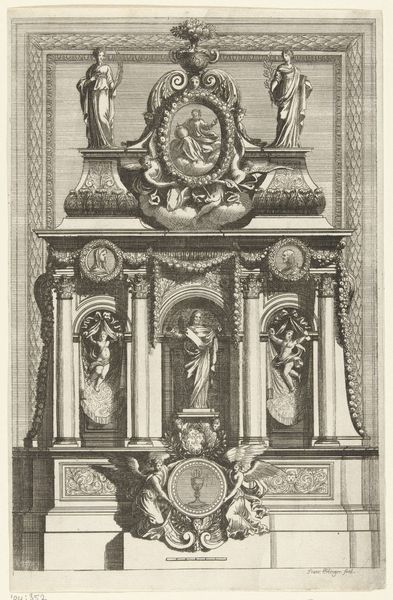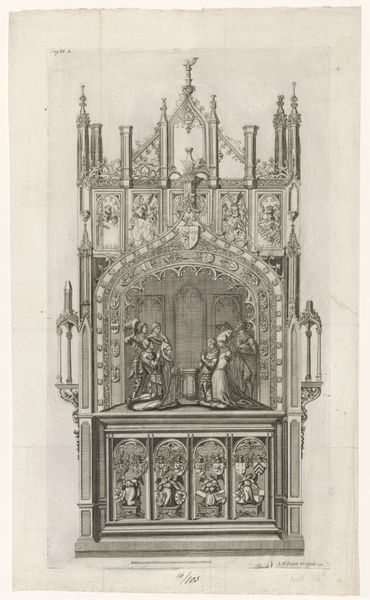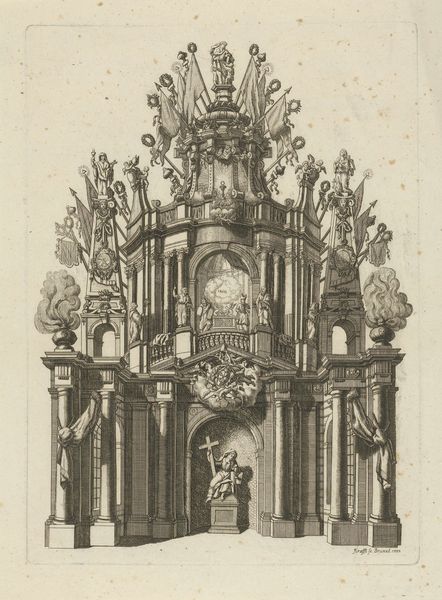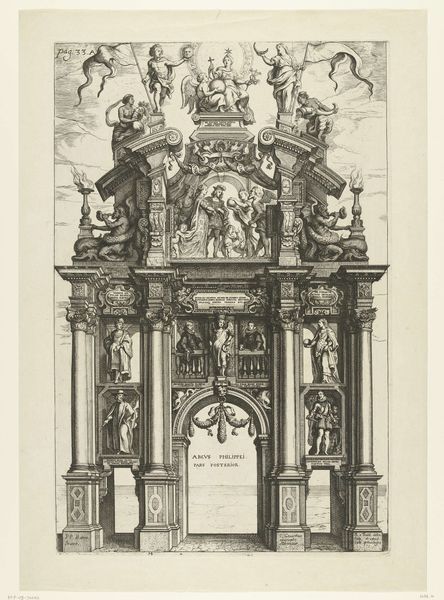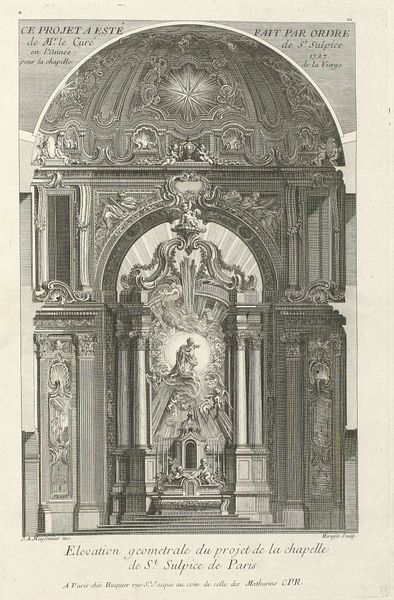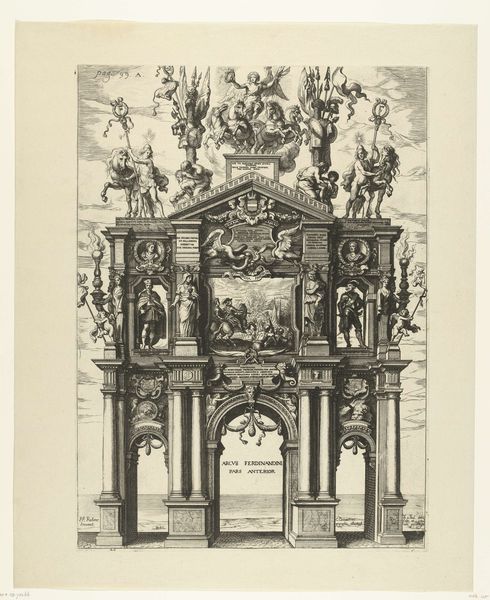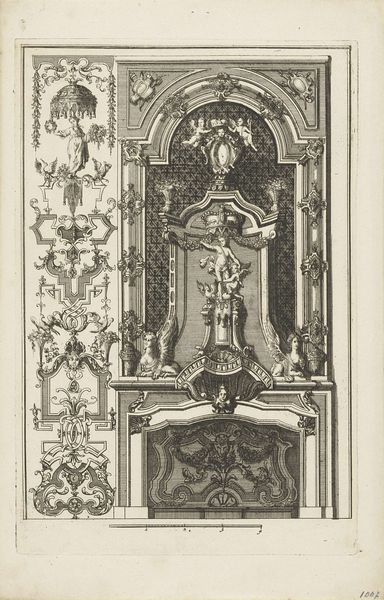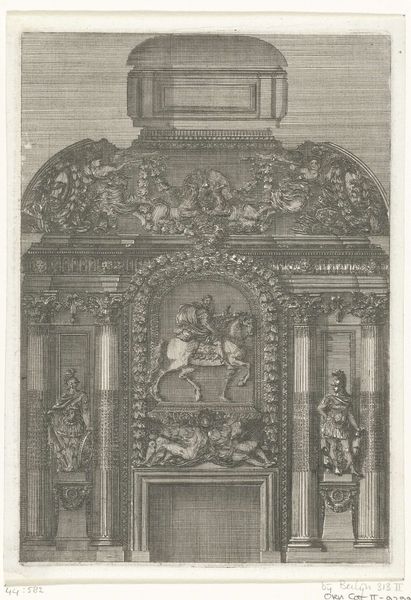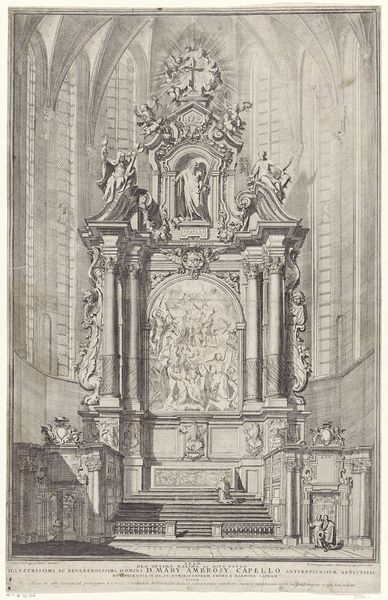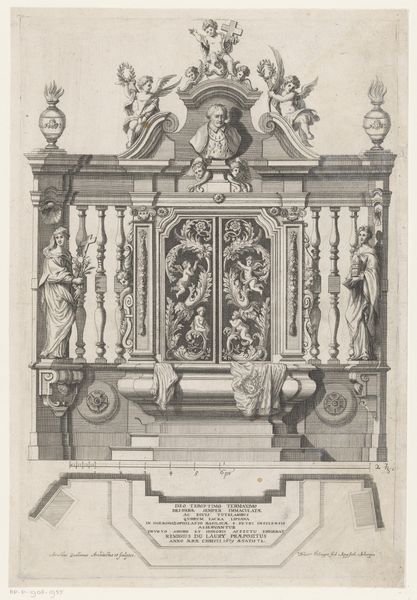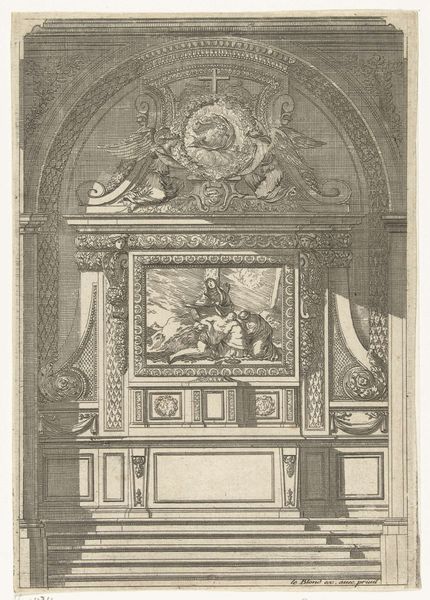
Altaar met miraculeuze hostie, zogenaamde Mirakel van het H. Sacrament te Brussel, 1370 1709
0:00
0:00
janbaptistberterham
Rijksmuseum
print, etching, engraving, architecture
#
baroque
# print
#
etching
#
history-painting
#
engraving
#
architecture
Dimensions: height mm, width mm
Copyright: Rijks Museum: Open Domain
Curator: This engraving, dating from 1709, captures the "Altar with the Miraculous Host, or the Miracle of the Holy Sacrament in Brussels, 1370," by Jan Baptist Berterham. What stands out to you initially? Editor: The sheer density of the detail is striking! It feels almost oppressive, laden with the weight of its own ornamentation. What can you tell me about the historical context here? Curator: The print itself is an etching and engraving. It depicts a highly ornamented baroque altar, commemorating an event from 1370. Consider the labor invested in creating such a detailed print in the early 18th century. It speaks to the resources dedicated to religious imagery. Editor: Absolutely, and what strikes me is the representation of power embedded within the image. We're not simply viewing a religious scene, but an active construction of authority. The angels and statues—particularly those regal figures flanking the central altar—project a very deliberate, perhaps even forceful, image of institutional strength and heavenly endorsement. The architecture itself cages a space that the elites control. Curator: The baroque style emphasizes grandeur and spectacle. You see the architecture and the host are so very decorated; those details were expensive. This style serves a purpose, to inspire awe and reinforce the authority of the church and, by extension, those who commissioned the work. Editor: Yes, I think that in addition to considering the direct materials and processes involved, it’s also valuable to consider what such a visually-arresting piece *does* within its social landscape. I also find myself curious about accessibility; given its textual component, was this primarily aimed at an elite, literate audience? Curator: It's highly likely it was originally intended for an elite audience. However, the image would have also circulated among a broader public, even those who couldn't read the Latin inscription. Prints were relatively accessible compared to painted works, which meant this could shape perceptions among different social strata. Editor: A fascinating interplay of medium, message, and social position then. This piece encourages questions about not just faith and its icons but also power, access, and the complex narratives they uphold and circulate. Curator: Agreed. Looking closer, we realize that there is so much more complexity embedded in the materiality and production of such seemingly straightforward depictions.
Comments
No comments
Be the first to comment and join the conversation on the ultimate creative platform.


